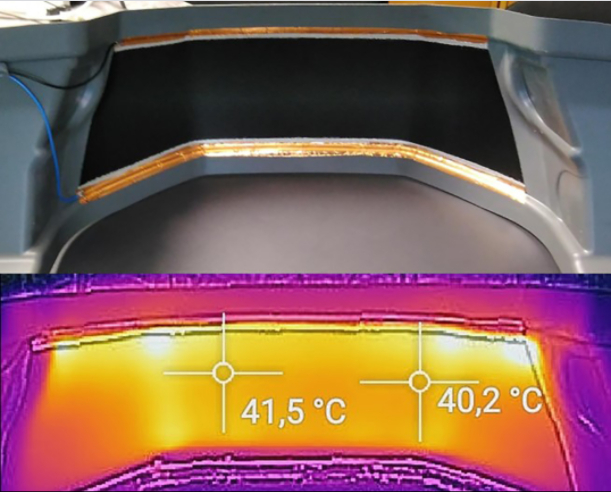
Researchers from Osnabruck University of Applied Sciences, Germany, are to support solar energy equipment supplier Osnatech GmbH in a two-year mission to develop an energy-efficient surface heating system to increase the range of electric vehicles using carbon nanotube technologies (CNTs).
According to the federal motor transport authority, the demand for electric vehicles is increasing, with the number of newly registered electric vehicles in Germany having risen by 260% in the previous year. The automotive electrification Index 2020, observes a similar trend globally. University researchers and Osnatech agree that electric vehicle range is an important aspect in many purchase decisions.
The most exciting development question for Osnatech is: How can carbon nanotube technology be applied to complex vehicle parts? This is where the laboratory for body development and lightweight construction at the Osnabruck University of Applied Sciences comes into play.
Osnatech approach is based on CNT technology with its special technological properties. This consists above all in producing a significant infrared radiation content even at lower temperatures with a lower energy requirement than those of conventional materials.
“Electromobility presents us with exciting challenges that must be taken into account for future vehicle generations,” says Prof Dr. Christian Schafers from Osnabruck University of Applied Science. He adds, “the heating of the interior is an essential success factor for e-mobility”. The energy-efficient heating of electric vehicles is therefore one of the important issues for the vehicle industry.
“Electromobility presents us with exciting challenges that need to be solved for the future generations of vehicles,” highlights laboratory manager Schäfers. “We all want to be able to say sooner rather than later, ‘the electric car drives and drives and drives.’”
“The heating of matter will be using our company’s core CNT technology,” says Bene Nintemann, founder and partner of Osnatech. The specialist from Bissendorf says his company has been developing and manufacturing electrical heating systems based on CNTs for years. Nintemann adds that he is looking forward to the collaboration: “After a year of intensive preparation, we are very proud that we can tackle this project. This would not have been possible without the active support of Prof. Schäfers with his dedicated team and the financial support from the federal government.”
Source: Hochschule Osnabrück | Hochschule Osnabrück (hs-osnabrueck.de)
Image credit : Compositesworld.com
